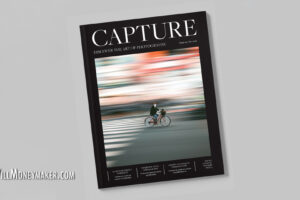Constructive criticism is a fantastic tool, one of the best things that you can add to your learning process. There are lots of places online where you can post images for critiques, and in major cities, photography groups and clubs often offer this at meetings or specialized events. If you have photographer friends, then this is something that you can organize among yourselves to get a little bit of feedback so that you can better identify problem areas.
What is it that makes criticism so valuable? Part of the problem, at least for me—and I’m sure for many others, too—is that we become very close to our work. Sometimes, I’m so immersed in it, so involved in the image that it becomes impossible for me to look at the image objectively. All I can see are the things I love about it, and none of the faults are as apparent as they should be.
When people can kindly point those faults out, that is something we can take home and use to improve our artwork. Perhaps you can’t fix the image that has been critiqued—sometimes, there are no reshoots, after all—but it may be something that you can apply to future works.
Either way, however you choose to apply the lessons you learn from constructive criticism, critiques can be a tricky beast. Sometimes, criticism hurts, and it helps to go into critique sessions knowing how to handle it. Of course, when critiques are just plain hurtful or rude, those are critiques you can safely disregard. But even the kindest of critics can sound harsh when you’re deeply attached to your work. So, here are some tips to help you handle critiques as they come!
Choose Your Images Wisely
The first step to getting critiques is to choose which images you’d like to have critiqued. Here, I would recommend using some amount of caution. We all have certain images that are precious to us. They’re near and dear to our hearts, and we’ve come to love what they represent so much that we’d not change a thing about them. But, you have to remember that your critique partners won’t be looking at your images with the same sentimentality as you. All people are different, and they’re all going to have different opinions, both good and bad. If you send out photographs that you are unwilling to change, you may be setting yourself up for more harm than good. A devastating critique on an image that you are in love with can not only ruin your enjoyment of that image, but leave you discouraged about the artmaking process in general. So, set those few golden images aside since critiques on these may not prove particularly helpful. Focus on the works that you are certain need some sort of improvement.
Processing the Faults in Your Images
The part that you’ll find most useful of the critique process are all the faults that your fellow photographers point out. The more images you present for critique, the more things people will find to correct! People will point out elements within the frame that they wished weren’t present, or they’ll pick up on things like colors that they feel shouldn’t have been included or ought to be tweaked. You may get comments on things like lighting, composition, or the post processing techniques that you’ve used. Everything is fair game when you’re seeking constructive criticism!
And often, you’ll be able to take these comments home, go back to the post processing stages and make whatever corrections are required to produce a better image. But sometimes, there may be things that just can’t be changed. Lighting, for instance—if it’s off by enough, the only option is to retake the image, and sometimes, this just isn’t possible.
Does this mean you should toss out the image and disregard the critiques? No! These comments still have a lot of value as a learning tool. Keep track of them, take notes on them, and you may begin to see patterns emerging. Always be thinking about how you can apply constructive criticism to photography as a whole. Once you’ve had an entire series of images critiqued, especially by different critique partners, you may find that the same things are being pointed out repeatedly across a variety of images, and these are the things that you’ll want to focus on improving in future photographs.
Evaluating a Critique’s Usefulness
The last—and possibly hardest—skill that you’ll need to master is learning when a critique is useful, something that you should listen to, and when it is something that you can safely discard. The problem comes from the idea that when people put their time, effort and expertise to work on your images, you are automatically predisposed to want to listen. After all, taking advice to heart is perhaps the greatest compliment you can pay to those who gave the advice.
But even so, it pays to learn to filter this advice. For one thing, if you have multiple people critiquing the same image, you’re likely to get opinions and feedback that sharply contrasts from one person to the next. You simply won’t be able to please everyone. And, even when the advice comes from extremely talented artists, it still may not be a good fit for you. It may go against your style, or it may go against what you envisioned for a particular image.
There are also personal biases to consider. If, for instance, you take a photograph of a car, and ask for criticism from someone who really doesn’t like photographs of cars, then the critique you receive may not be as valuable as critique from someone who loves cars. You’ll find yourself asking if the feedback is truly because of some mistake that you’ve made, or if it simply comes from the fact that the person critiquing it prefers other subject material. In that sense, it really helps to know the preferences of the people who critique your images so that you can judge feedback as it comes in. In short, constructive criticism is an amazing way to further your skills as a photographer—perhaps even one of the best ways to improve. But, you’ll need to learn how to handle critique gracefully, and most of all, you’ll need to assess each critique to make sure that it fits what you are trying to accomplish with each image, and with your body of artwork as a whole.





